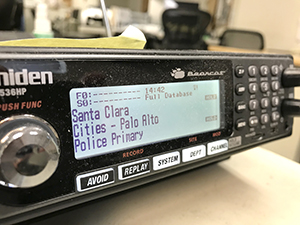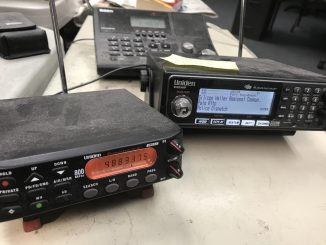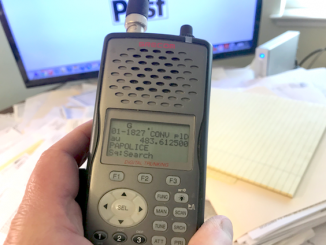
BY ELAINE GOODMAN
Daily Post Correspondent
Nearly a year after Palo Alto abruptly began encrypting police radio transmissions — meaning the public and news media can’t hear what officers are doing — the California Attorney General’s Office said law enforcement should “take any necessary steps” to help reporters get information they need.
The comment came as the San Francisco Police Department this month rolled out procedures to protect subjects’ personal information that goes out over the airwaves, without going to full radio encryption. The public can still listen to dispatchers send San Francisco officers out on calls and hear the outcome of the call. The Post first reported SFPD’s plans for partial encryption in May.
Protecting personal information, such as a person’s name along with their driver’s license number, was the subject of a California Department of Justice bulletin in October 2020.
Protecting personal information
The bulletin reminded law enforcement agencies to take steps to protect the so-called “personally identifiable information,” or PII, which is a requirement for using the California Law Enforcement Telecommunications System. Officers use CLETS to access driver records and criminal histories.
Encryption is one way to protect the personal information, the DOJ bulletin said, or a department can establish policies that accomplish the objective.
Even so, police departments in cities including Palo Alto, Mountain View and Los Altos flocked to encryption early last year, citing the DOJ bulletin as the reason for doing so.
Palo Alto police started fully encrypting their radio transmissions on Jan. 5, announcing the move through an email to the media just minutes before pulling the plug.
The Daily Post asked the Attorney General’s Office last week whether it was planning to update the October 2020 bulletin.
The AG’s press office said it did not have any updates to report at this time, but added the following:
“We generally would encourage law enforcement, in line with those requirements (to protect PII), to take any necessary steps to assist reporters in accessing the information they need to carry out their important work,” the AG’s press office said. “It is ultimately up to each agency to determine the appropriate approach.”
CHP avoided encryption
Some law enforcement agencies have found ways to protect personal information without moving to full encryption or, in the case of the California Highway Patrol, without using encryption at all.
In San Francisco, police are now encrypting some transmissions, including those in which an officer is checking someone’s driving record, criminal history or license plate information, and therefore personal information is transmitted.
The encryption transition took place on Dec. 12, police spokesman Adam Lobsinger said. The department has also switched from analog to digital radios, which gives better radio coverage throughout the city, Lobsinger said.
But the public and news media can hear dispatchers send officers out on calls, and find out how the calls end. Listeners must have a Project 25, Phase 2 compatible scanner in order to hear SFPD dispatch broadcasts.
For example, listeners can hear that there was a vehicle accident with injuries, a shooting, or a fight, along with the location of the incident, according to the San Francisco Department of Emergency Management, or DEM, which provides dispatch services.
Dispatchers will also broadcast an acknowledgement of an officer-initiated event, such as a traffic stop, which the public will be able to hear.
The public will also be able to hear the disposition of an incident, which is when a situation has calmed down and is no longer posing a danger to others, DEM said.
For example, dispatchers might say “Code 4 on the assault, parties separated and sorting,” or “Code 4 on the stabbing, suspect gone on arrival. Scene is safe for medics.” Code 4 means no further assistance is needed.
In addition, the public can see a list of incidents from the dispatch system through the city’s data portal.



SVRIA is complying with the CADOJ mandate while locking out both the press and the public from listening. However, the communications security of SVRIA’s encrypted radio transmissions has been compromised and likely won’t be fixed for a long time.
See agenda item 6b: https://svria.org/download/Other/working_committee/110821_wking_committee_mtg/Working-Committee-Agenda-and-Packet-11-08-2021-FINAL.pdf
And agenda item 6a:
https://svria.org/download/Other/Minutes-and-Agendas/11182021_board_meeting/11182021-Board-Meeting-Agenda-Packet.pdf